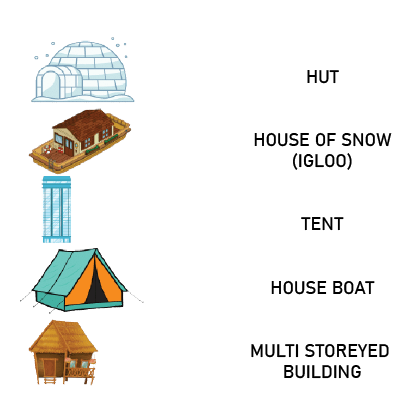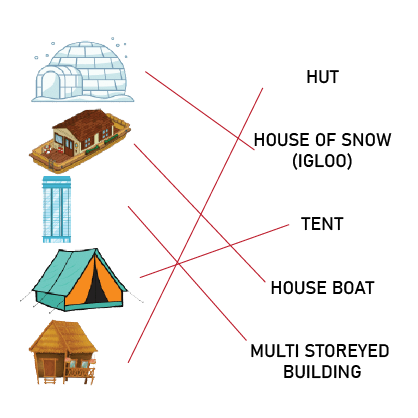A House Like This Class 3 Questions and Answers - Free PDF Download
FAQs on NCERT Solutions For Class 3 Evs Chapter 18 A House Like This - 2025-26
Q1. Why are the Houses in Assam Made on Bamboo Pillars?
Ans. Assam receives very heavy rainfall throughout the year. There are chances of flooding because of heavy rainfall. So, the houses are built on bamboo pillars called stilts, which are ten to twelve feet high to prevent water from entering the houses during floods.
Q2. How can NCERT Solutions on Vedantu Help you in Scoring Maximum Marks in Exams?
Ans. If you want to get good marks in exams then you need to learn and revise all the chapters covered in your syllabus. Vedantu offers many additional exercises in the NCERT Solutions that will help you with your practice. We also provide additional reference notes along with the exercises that can strengthen your concepts. Apart from this, you can connect anytime with the panel of experienced teachers who can help you with your doubts.
Q3. How is NCERT EVS for Class 3 Beneficial for the Students?
Ans. The content in the NCERT EVS book for Class 3 is consolidated in a very unique format. The chapters in the NCERT EVS let children to explore the concepts more. The chapters are in the form of stories, narratives, comic strips, poems, puzzles, etc. Stories and narratives stimulate children as they can easily relate to the characters through their imagination. The language also is very simple so that children can easily understand the topics.
Q4. What are Some of the Materials That can be Used in Building Different Kinds of Houses?
Ans. The materials that can be used for different kinds of houses are:
Multi-Storied Buildings: Bricks, cement, stone.
Tent: Canvas, Cloth
Huts: Mud, stone, dried thorny bushes for the roofs.
Boat House: Wood
Igloos: Snow
Q5. What is a house according to Chapter 18 of Class 3 EVS?
Ans: Chapter 18 "A House Like This" of Class 3 EVS. This Chapter tells us about the different types of houses in which we live. Houses are made up of wood, bricks, cement, and steel. These houses are built for us to live safely. Houses protect us from bad weather conditions. These are built according to the conditions of the place.
Q6. In Chapter 18 of EVS Class 3, why are the houses made on bamboo pillars where Bhupen lives?
Ans: Bhupen lives in Assam, and it is a place where heavy rainfall takes place. The houses are built on bamboo pillars because these pillars or slits prevent water from entering the houses during heavy rainfall. These slits are ten to twelve feet above the ground. The sloping roofs of the houses allow the water to flow down. These bamboo pillars act as protectors for the houses in Assam.
Q7. How is a houseboat different from other houses, according to Chapter 18 of Class 3 EVS?
Ans: A houseboat is a house that floats on water. These houseboats are different from other houses. These houseboats float and keep moving on the water while other houses do not move and remain in one place. They are not fixed in one place. You can find more details of this Chapter, including worksheets, sample questions, and more free of cost on the Vedantu website and the Vedantu app.
Q8. In which area is Chameli's house, according to Chapter 18 of Class 3 EVS?
Ans: Chameli's house is in Manali, which is a hill station. It is a place where there is heavy rainfall and snowfall. The houses are made of wood. As Manali is a hilly area, the houses there are built to have sloping roofs so that during rainfall or snowfall, water and snow do not remain on the roofs. For detailed notes of this chapter, you can visit Vedantu.
Q9. How can I make a study plan for Chapter 18 of Class 3 EVS?
Ans: Follow the given steps to make an effective study plan:
i. Make a timetable of balanced activities.
ii. Take out time to study each subject.
iii. At least, give two hours to this subject.
iv. Work according to the schedule.
v. Practice questions after reading the Chapter.




















